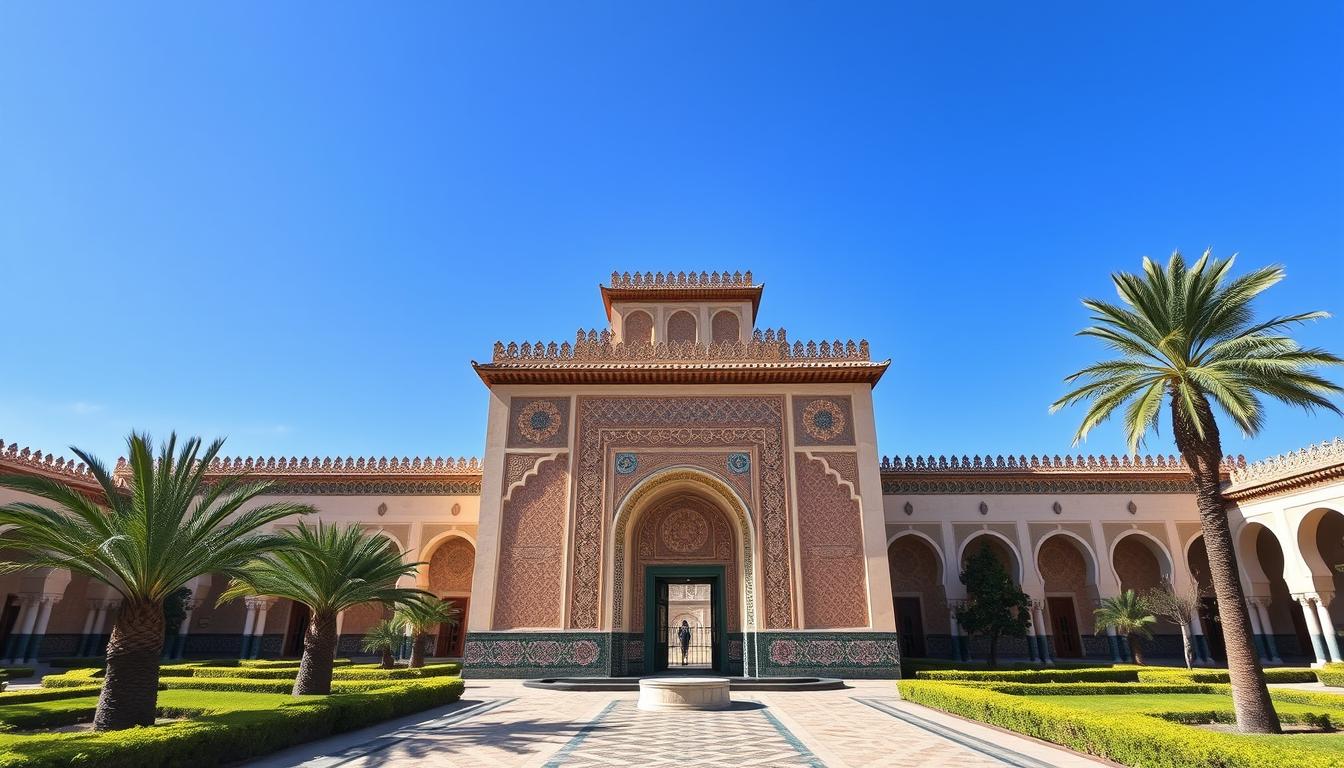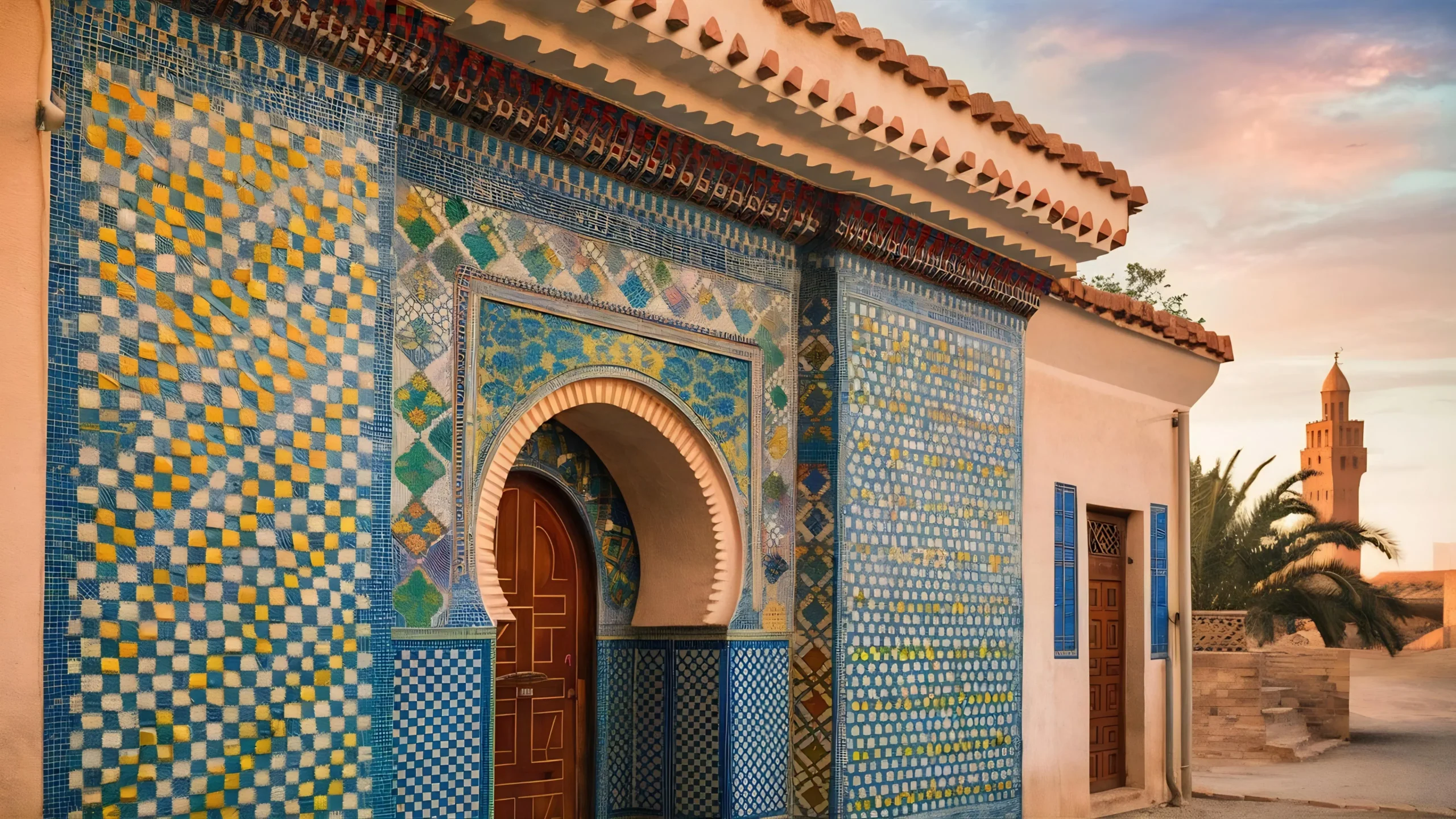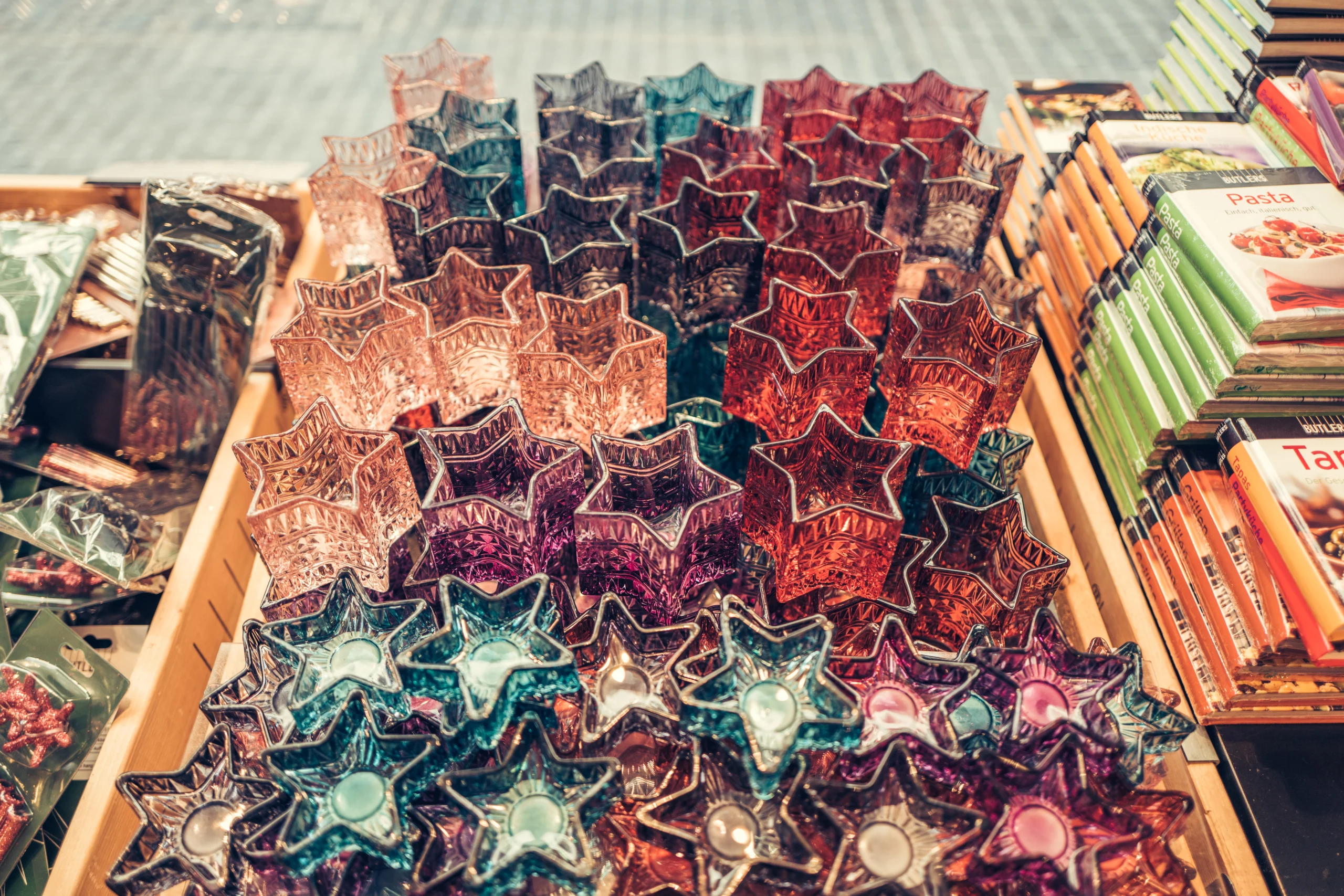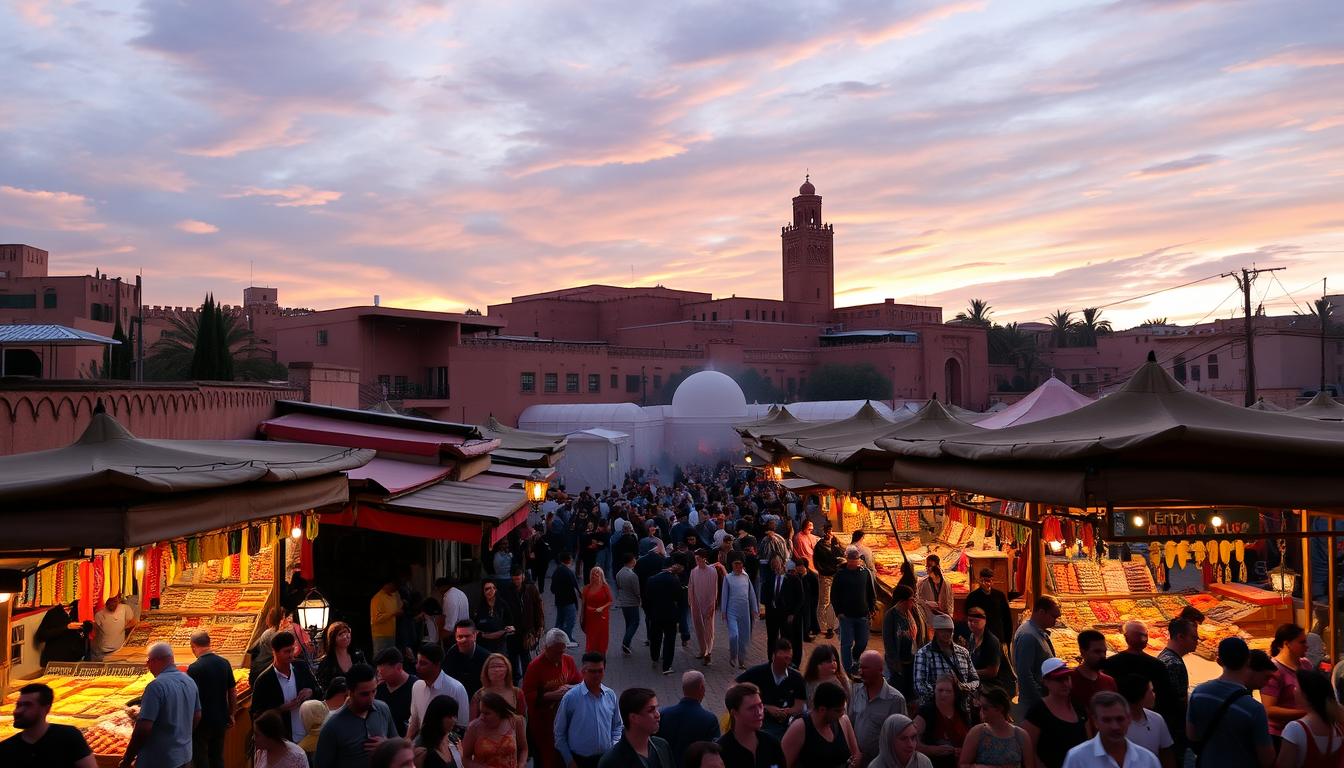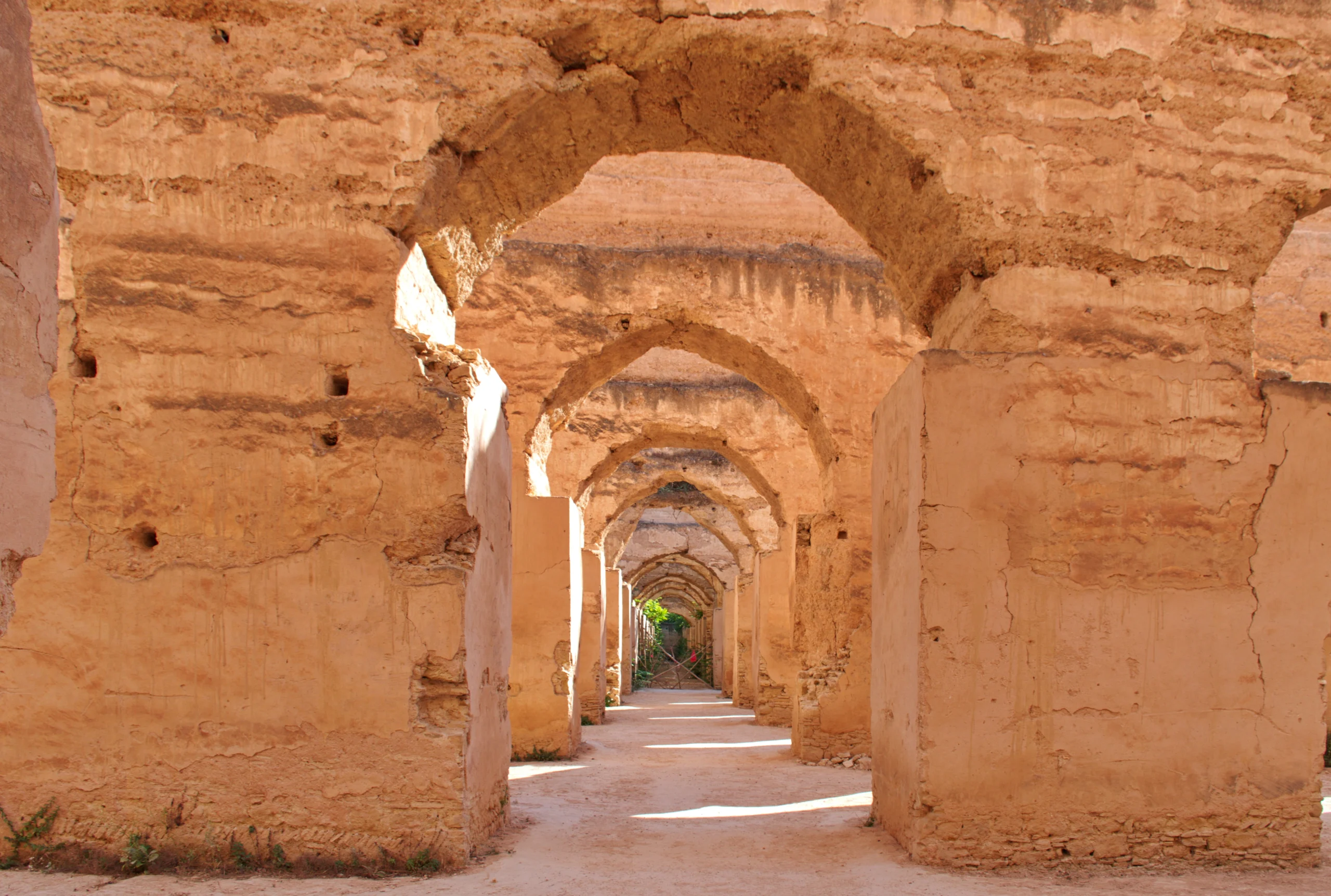Imagine walking into a world filled with centuries of royal history. The royal palace in Morocco is more than a beautiful building. It’s a gateway to North Africa’s rich culture. Your visit will take you on an extraordinary journey.
The royal palace is in the heart of Morocco’s lively cities. It shows off architectural skill and cultural heritage. Every stone and archway has a story of power, tradition, and art.
Exploring this place, you’ll see why it’s not just a landmark. It’s a living museum of Moroccan history and royal splendor. Get ready for an enchanting experience that will change how you see cultural travel.
Key Takeaways
- Discover the incredible historical significance of Moroccan royal residences (outside visits)
- Explore an architectural wonder that spans centuries
- Experience the cultural heart of Morocco through its royal palace
- Uncover hidden stories behind royal architectural design
- Prepare for an unforgettable cultural journey
Introduction to the Royal Palace of Morocco
The Royal Palace of Morocco is a stunning example of the country’s rich history. It’s located in the heart of Morocco. This architectural wonder shows centuries of cultural heritage and royal traditions.
The palace is more than a home. It showcases the unique moroccan palace architecture that has shaped the nation’s royal scene for ages. Visitors step into a world filled with historical importance and architectural wonder.
Historical Significance
Morocco’s royal history goes back hundreds of years. The palace is a key symbol of national identity. The monarchy has greatly influenced the country’s culture and politics.
- Established in the 12th century
- Survived multiple dynastic changes
- Represents continuous royal lineage
“The Royal Palace is not just a building, but a living museum of Moroccan heritage.” – Royal Historian
Architectural Marvel
The palace combines Islamic and Moorish design in an amazing way. Its tile work, large courtyards, and geometric patterns show architectural brilliance.
| Architectural Feature | Cultural Significance |
|---|---|
| Zellige Tilework | Represents mathematical precision and artistic expression |
| Ornate Courtyards | Symbolizes royal hospitality and social gathering spaces |
| Carved Wooden Ceilings | Demonstrates traditional Moroccan craftsmanship |
Every architectural detail shows the deep cultural roots of the Moroccan monarchy. It invites visitors to explore a living piece of historical artistry.
Location and Accessibility
Exploring the Royal Palace requires careful planning. It’s located in the heart of Morocco’s lively cities. This offers a deep dive into Moroccan culture and palace tourism.
Navigating to the Palace
Getting to the Royal Palace varies by city. You’ll find palaces in Marrakech, Fez, and Rabat. Here are your main ways to get there:
- Taxi services from city centers
- Public transportation routes
- Guided tour shuttle services
- Private car rentals
Exciting Nearby Attractions
The areas around the Royal Palace are full of culture. You can see:
- Traditional souks and marketplaces
- Historic medinas
- Local artisan workshops
- Ancient architectural landmarks
“The journey to the Royal Palace is as magical as the destination itself” – Moroccan Travel Guide
Transportation Tips
Here are some tips for your visit:
- Book guided tours for easy travel
- Check seasonal changes in access
- Verify visiting hours in advance
- Be ready for walking
Exploring the Palace Grounds
The Royal Palace of Morocco is a journey through stunning landscapes and architecture. You’ll see the beauty of Moroccan design and royal elegance.
Walking into the moroccan palace gardens feels like stepping into a masterpiece. These spaces show the royal family’s love for beautiful outdoor areas.
Lush Garden Landscapes
The palace’s gardens are as impressive as its interiors. You’ll find:
- Intricate geometric patterns in landscaping
- Carefully pruned citrus and olive trees
- Ornate water features with traditional Islamic design
- Colorful flowering plants representing Morocco’s diverse botanical heritage
Architectural Courtyards
Every courtyard in the palace has its own story. Zellige tiles, carved wooden details, and elegant archways take you through centuries of royal tradition.
“The gardens are not just spaces, but living narratives of Morocco’s rich cultural heritage.” – Royal Palace Curator
Visitors get a sensory journey of natural beauty and architectural precision. The palace grounds are a must-see for cultural immersion.
The Architecture of the Royal Palace
The Moroccan Royal Palace is a stunning example of moroccan palace architecture. It has amazed visitors for many years. This palace shows the beauty of moroccan culture through its design and details.
The palace’s design shows the growth of art and culture over centuries. Each part tells a story of skill and history, more than just building design.
Islamic and Moorish Architectural Influences
The palace’s design is deeply rooted in Islamic architecture. It features:
- Intricate geometric patterns
- Elaborate tile work (zellige)
- Ornate carved wooden details
- Symmetrical architectural layouts
Key Architectural Details
Visitors will be amazed by the palace’s unique features:
| Architectural Feature | Significance |
|---|---|
| Courtyard Design | Represents traditional Moroccan spatial organization |
| Decorative Arches | Showcase Moorish architectural precision |
| Intricate Tile Work | Reflects cultural artistic traditions |
“Architecture is a visual art, and the buildings speak volumes about the culture that created them.” – Unknown Architect
The moroccan palace architecture is more than a building. It’s a living museum of moroccan culture. It invites you to explore its rich history through its beautiful design.
The Role of the Royal Palace in Modern Morocco
The royal palace is a key symbol of Morocco’s rich history. It shows the country’s deep political and cultural roots. The story of the royal moroccan family is at the heart of this history.
In Morocco today, the royal palace is very important. It’s not just where the king lives. It’s also a symbol of the country’s past and its ongoing leadership.
The Current Monarch’s Residence
King Mohammed VI uses the palace as his home and the center of government. The palace mixes old architecture with new needs for administration.
- Serves as the primary administrative center for national governance
- Hosts diplomatic meetings and state ceremonies
- Represents continuity of the royal moroccan family’s leadership
Political and Cultural Significance
“The palace is not just a building, but the beating heart of Moroccan national identity.” – Royal Historian
The palace is key in keeping Morocco’s culture alive while moving forward. It shows the balance between old traditions and new changes.
Learning about the moroccan monarchy history shows the palace’s role today. It changes with the times but keeps its importance as a symbol of unity and leadership.
Visiting the Royal Palace: What to Know
Planning your visit to the royal palace in Morocco needs careful thought. This place offers a unique look into Morocco’s rich culture. Knowing the right details can make your trip smooth and memorable.
Before you go, it’s important to know the essential visitor information. This will help you get the most out of your visit to this historic site.
Entry Guidelines for Visitors
When you plan to visit the royal palace in Morocco, remember these important guidelines:
- Get official tickets in advance
- Bring valid government-issued ID
- Respect photo rules in certain areas
- Check current diplomatic rules before you go
Best Times to Visit
Choosing the best time for your visit can make a big difference. Here are some tips:
- Spring (March-May): Enjoy mild weather and beautiful gardens
- Fall (September-November): Comfortable weather and fewer people
- Avoid summer months: It can be too hot for touring
“A well-planned visit transforms a simple tour into an unforgettable cultural journey.” – Moroccan Tourism Board
With the right timing and preparation, your visit to this magnificent palace will be unforgettable.
Nearby Accommodations
Exploring Moroccan royal residences is better with comfortable lodging. It should show the true spirit of Moroccan hospitality. Your stay can make your trip near the Royal Palace even more special.
Recommended Hotels
Choose from these top hotels for a great stay:
- La Mamounia – A historic 5-star hotel with stunning palace-like architecture
- Sofitel Marrakech Lounge & Spa – Elegant international standard accommodations
- Riad Kniza – Boutique hotel with traditional Moroccan design
Unique Stays
For a real Moroccan palace experience, try these unique places:
| Accommodation Type | Experience | Price Range |
|---|---|---|
| Traditional Riad | Authentic courtyard home experience | $80-$250/night |
| Desert Camp | Luxury tent near royal regions | $150-$400/night |
| Historic Kasbah | Restored fortress-style lodging | $100-$300/night |
“Your accommodation is not just a place to sleep, but a gateway to experiencing Moroccan culture.” – Moroccan Travel Experts
Book early, as peak seasons fill up fast. This way, you’ll get the best spots near the royal residences.
Cultural Experiences Around the Palace
Visiting the Royal Palace of Morocco is more than seeing amazing buildings. The area around it is full of Moroccan culture. It invites you to explore local traditions and experiences.
Exploring Local Markets and Bazaars
Close to the palace, you’ll find lively markets. They show the heart of Moroccan palace tourism. The medina’s narrow streets are a feast for your senses:
- Handwoven carpets with detailed designs
- Copper lanterns that create magical shadows
- Spice stalls with fragrant blends
- Traditional leather goods made by local artisans
“Every corner of the market tells a story of Morocco’s rich cultural landscape.” – Moroccan Travel Enthuasiast
Traditional Moroccan Cuisine
Trying authentic Moroccan food is a must. The dishes around the palace show Morocco’s long history of food.
- Tagine: Slow-cooked stews with tender meats and veggies
- Couscous: The national dish, served with lamb or chicken
- Mint Tea: A sign of welcome
Local restaurants near the palace offer unique dining experiences. They connect you with Moroccan culture, making a meal unforgettable.
Dress Code and Etiquette
Visiting the royal palace in Morocco means you must respect local customs. Your clothes and actions show your respect for Moroccan culture. Knowing the dress code can make your visit more meaningful.
- Dress modestly and conservatively
- Cover shoulders and knees
- Avoid tight or revealing clothing
- Wear comfortable walking shoes
Appropriate Attire for Visitors
Your clothes should show respect for Moroccan traditions. Light, breathable fabrics are best in Morocco’s heat. Men should wear long pants and collared shirts. Women might choose loose trousers or long skirts.
“Respect is the highest form of cultural appreciation” – Moroccan Proverb
Cultural Considerations
It’s not just about what you wear. You should also:
- Greet locals with a polite “Salam”
- Ask permission before taking photos of people
- Remove shoes when entering sacred places
Choosing your outfit wisely helps you fit in with the essential Morocco packing list with grace and respect.
Guided Tours of the Royal Palace
Visiting the Moroccan palace is a chance to explore royal history. The Royal Palace offers guided tours. These tours let you see the beauty of Morocco’s royal past.
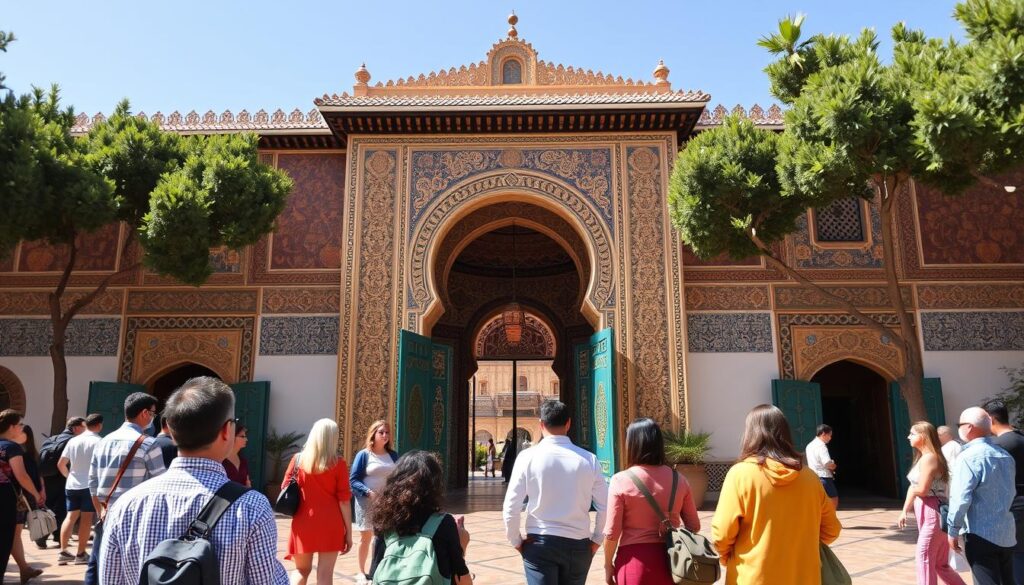
Guided tours help you see the palace’s details and cultural importance. They give you a deep look into Morocco’s royal world.
Tour Options Available
- Standard Group Tours (60-90 minutes)
- Private Exclusive Tours
- Photography-focused Tours
- Historical Narrative Tours
What to Expect During Your Tour
Guided tours offer unique views into the palace. You’ll see the palace’s beauty, learn about its design, and understand its history.
| Tour Type | Duration | Key Features |
|---|---|---|
| Group Tour | 60 minutes | Basic palace overview |
| Private Tour | 90 minutes | Detailed historical insights |
| Photography Tour | 120 minutes | Specialized architectural photography |
“A guided tour transforms your visit from a simple walk through rooms to a profound cultural journey.” – Royal Palace Guide
Book your tour early, wear comfy shoes, and bring a camera. Your tour will be a memorable journey through Morocco’s royal history.
Photography Tips While Visiting
When you visit the Royal Palace Morocco, you’ll see amazing architecture. But, you need to plan and follow local rules to get great photos. Knowing the rules is key for a memorable visit.
Before you start taking pictures, learn the photography rules. Not all parts of the palace are open for photos. Some areas need special permission.
Best Spots for Memorable Photos
- Intricate Palace Courtyards
- Ornate Islamic Architectural Details
- Exterior Moorish Archways
- Manicured Royal Gardens
Photography Restrictions to Know
- Avoid photographing government personnel
- Request permission before capturing interior spaces
- No flash photography in sensitive areas
- Respect designated no-photo zones
Pro Tip: Use a wide-angle lens to capture the palace’s grandeur. The best times for photos are early morning or late afternoon. This is when the light is most dramatic.
“Photography is about capturing the soul of a place, not just its physical appearance.” – Moroccan Photography Guide
Responsible photography means respecting the palace’s history. Always ask local staff if you’re unsure about photography rules.
Events and Ceremonies at the Palace
The Royal Palace of Morocco is a lively hub of moroccan cultural heritage. It hosts many amazing ceremonies all year round. These events give visitors a special look into the Moroccan monarchy’s rich traditions.
Moroccan royal ceremonies mix old traditions with modern royal rules. The palace is where many important events take place. These events show off the country’s deep culture.
Major Events to Explore
- Throne Day Celebration: An annual event marking the king’s ascension
- Ramadan Royal Receptions: Traditional gatherings during the holy month
- National Independence Day Ceremonies
- Royal Wedding Celebrations
Understanding Moroccan Traditions
Every ceremony shows off Morocco’s cultural heritage. These events are more than just formalities. They are a way to see Morocco’s royal legacy come to life. Visitors can see:
- Elaborate traditional dress
- Ancient musical performances
- Intricate diplomatic protocols
- Historical ceremonial rituals
“The Royal Palace represents more than a building—it’s a living museum of Moroccan traditions.” – Moroccan Cultural Expert
Even though these events might not be open to the public, knowing about them is very enlightening. It gives travelers a deep look into Morocco’s royal culture.
Safety Tips for Visitors
Visiting the royal palace morocco needs careful planning and awareness. Your safety is key when exploring moroccan palace tourism. Knowing important guidelines helps you have a safe and enjoyable trip.
Traveling to a historic place requires smart planning and caution. Here are some safety tips to help you confidently explore the royal palace morocco.
General Safety Guidelines
- Stay alert in crowded tourist areas near the palace
- Keep valuable items secure and out of sight
- Use official transportation and licensed tour guides
- Carry minimal cash and use secure payment methods
- Share your daily itinerary with a trusted contact
Health Considerations
Getting ready for your moroccan palace tourism trip means knowing about health risks and how to prevent them.
| Health Recommendation | Details |
|---|---|
| Vaccinations | Hepatitis A, Typhoid, routine updates |
| Medical Facilities | Locate nearby clinics and hospitals |
| Hydration | Carry bottled water, avoid tap water |
| Sun Protection | Sunscreen, hat, lightweight clothing |
“Preparation transforms challenges into memorable experiences.” – Moroccan Travel Wisdom
Remember, a well-informed traveler is a safe traveler. Take time to understand local customs and prepare well for your royal palace morocco visit.
Shopping Tips Near the Royal Palace
Exploring the vibrant marketplace around the Moroccan Royal Palace is a great way to dive into moroccan cultural heritage. You’ll get a unique look at local craftsmanship and traditional skills. It’s a special experience.
Souvenirs to Look For
Shopping near the Royal Palace reveals authentic Moroccan treasures. Here are some top souvenirs to consider:
- Handwoven Berber carpets with detailed designs
- Ornate brass lanterns and metalwork
- Traditional leather goods
- Babouche (traditional Moroccan slippers)
- Argan oil and local spice blends
Best Shops in the Area
The marketplace around the palace has top-notch shopping spots for moroccan palace tourism fans. Here’s a list of shops you should check out:
| Shop Name | Specialty | Location |
|---|---|---|
| Medina Artisan Market | Traditional Crafts | Palace Square |
| Royal Bazaar | Luxury Souvenirs | Near Palace Entrance |
| Berber Treasures | Textiles and Carpets | Historic District |
“Shopping near the Royal Palace is not just a purchase, it’s a cultural experience.”
Pro tip: Always negotiate prices with respect. Be ready to visit several shops to find the perfect Moroccan souvenir.
Frequently Asked Questions
Planning a visit to the royal palace Morocco can raise many questions. This FAQ section will help you navigate your moroccan palace tourism experience with confidence and clarity.
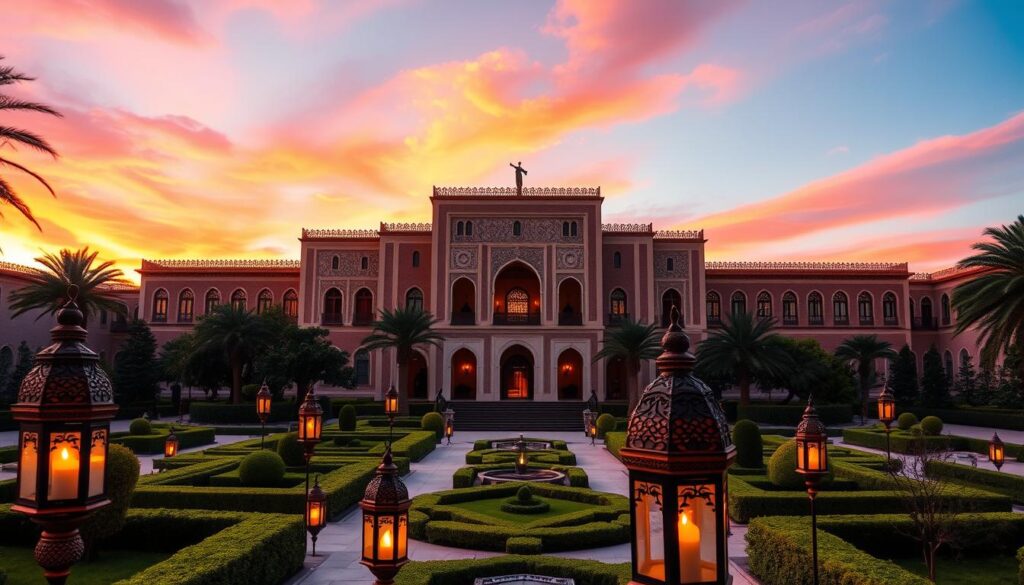
Top Visitor Questions Answered
Travelers often have specific inquiries about exploring this magnificent historical landmark. We’ve compiled the most common questions to ensure you’re fully prepared for your royal palace adventure.
- Is photography allowed inside the palace grounds?
- What are the typical entry requirements?
- How long does a standard palace tour take?
- Are guided tours available in English?
Essential Visitor Recommendations
Maximize your royal palace Morocco experience with these expert tips and insights:
- Book tours in advance during peak tourist seasons
- Wear comfortable walking shoes
- Carry lightweight, respectful clothing
- Bring a water bottle and sunscreen
| Visitor Tip | Recommendation |
|---|---|
| Best Time to Visit | Spring or Fall (Mild Temperatures) |
| Tour Duration | Approximately 1-2 Hours |
| Ticket Pricing | $10-$15 USD |
“Exploring the royal palace is a journey through Morocco’s rich cultural heritage.” – Historical Travel Magazine
Planning Your Visit
Your moroccan palace tourism experience requires careful preparation. Check official websites for the most current information, as palace access can change based on official events or maintenance schedules.
Pro Tip: Learn a few basic Arabic or French phrases to enhance your interaction with local guides and staff.
Conclusion: Final Thoughts on Your Visit
Your visit to the Moroccan royal residences gives you a deep look into the country’s rich culture. The Royal Palace shows Morocco’s history, architecture, and traditions. It’s more than just buildings; it’s a window into the country’s soul.
Walking through these spaces, you’ll see the stories of royal legacies and national pride. The designs, meanings, and elegance of these places are captivating. A trip to these luxury travel destinations becomes a journey into Moroccan culture.
Reflecting on Your Experience
Think about what you learned from your visit. Moroccan royal residences are more than old buildings. They are alive with culture. The architecture, tile work, and gardens show Morocco’s history and its importance today.
Planning Your Next Adventure
Your visit to the Royal Palace should make you want to see more of Morocco. The country has many historical sites, each with its own story. From ancient medinas to coastal cities and desert landscapes, Morocco is full of places to explore and learn.
FAQ
Can visitors enter the Royal Palace of Morocco?
Yes, some parts of the Royal Palace are open to visitors. You can take guided tours to see certain areas. But, access is limited, so check the current rules before you go. Most tours show you the outside and some inside areas.
What is the historical significance of the Royal Palace?
The Royal Palace is a key part of Moroccan history. It’s where the Moroccan king lives and has been important for centuries. It shows Morocco’s rich history and architecture.
Are there photography restrictions at the Royal Palace?
Yes, there are strict rules about taking pictures. You can usually take photos outside and in the gardens. But, inside photos are often not allowed. Always ask your guide about photography rules to avoid problems.
What architectural styles can be seen at the Royal Palace?
The palace has beautiful Islamic and Moorish designs. You’ll see amazing tilework, wooden carvings, and arches. It’s a showcase of Moroccan art and culture.
When is the best time to visit the Royal Palace?
Spring (March to May) and autumn (September to November) are the best times to visit. These months have mild weather. Try to visit in the early morning or late afternoon for a better experience.
What should I wear when visiting the Royal Palace?
Dress modestly and respectfully. Wear long pants or skirts, covered shoulders, and comfortable shoes. Avoid revealing clothes to respect Moroccan culture.
Are guided tours available at the Royal Palace?
Yes, guided tours are available but limited. They must be booked in advance. These tours offer deep insights into the palace’s history and culture. Some tours are in multiple languages, but availability varies.
How long does a typical palace tour last?
Tours usually last 1-2 hours. The exact time depends on the tour package and areas you see. Plan extra time for security checks and waiting.
What cultural experiences are near the Royal Palace?
The area around the palace is full of cultural experiences. You can visit traditional markets, historic medinas, museums, and Moroccan restaurants. It’s a great place to explore Moroccan arts, crafts, food, and daily life.
Is the Royal Palace accessible for visitors with disabilities?
Accessibility might be limited because of the palace’s age. Some areas outside might be wheelchair-friendly. Contact tour operators in advance to discuss accessibility needs and possible solutions.

